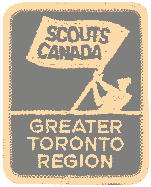
www.gtrsi.com
 |
www.gtrsi.com |
 |
What stage are you at in the Volunteer Recruitment and Development (VRAD) process? Are you involved with others as they work through it?
The VRAD process describes steps adult volunteers take as they move through Scouting from the time they are first recruited, to their eventual departure. After receiving their Scouting orientation, they begin the annual volunteer cycle; appointment, operation (i.e. performing roles), evaluation, recognition for contribution, and finally, decision about continued involvement.
Finding the right person for a role may take longer than some of the common short-cut recruiting techniques, such as blackmail(e.g. "Your child can't join unless you become a leader"). However, the problems created by a poor selection may become very time consuming.
Attitude. That's the one factor most difficult to change in a potential recruit. Knowledge and skills can be taught or developed easiest among willing learners. The National Volunteer Services Committee is developing additional resources to guide recruiters when selecting new Scouters.
New volunteers receive orientation from their recruiters, peers and designated coaches. This should include informal and formal orientation sessions. Helpful video and print materials such as JUMPSTART are also available.
Bylaw, Policies and Procedures provides direction on the responsibility for recommending and making appointments to various Scoutin positions. Most appointments are for the balance of a Scouting year, while others follow the council year.
Once recruited properly, volunteers generally want to taste success. But the recent Cub Review identified poor program delivery as a common reason youth give for dropping out. This finding caused Scouts Canada to introduce the VRAD as a means to draw attention to the steps that contribute to program success. Properly recruited volunteers are more receptive to coaching and training.
Training approaches have become flexible. The next shift will be towards what is called Competency Based Training (CBT). CBT emphasizes learning needs; it encourages any means that helps build necessary skills and knowledge. It will put greater emphasis on coaching from Service Scouters and peers. Learners will then be recognized for their abilities, and not attendance at courses.
How are you doing in your role? Completing checklists and listening to feedback from others can give you a sense of your success and need for further training. Seek out this feedback from those who want to help you succeed.
Each year you should consider whether you want to continue in your present role, try something else, or retire from Scouting. Your level of enthusiasm for your role will have a direct impact on your success -- particularly in program positions.
Watch for new resources being developed to support the Volunteer Recruitment and Development process. Your success as a volunteer means that Scouting will achieve it Mission with young people. That's what VRAD is all about.
"Reproduced with permission of the Leader magazine
and the author."
|
Disclaimer: Anything posted to this Home Page
are the opinions of the individuals who posted them and are not the views of Scouts Canada. |